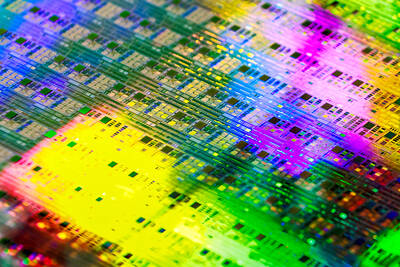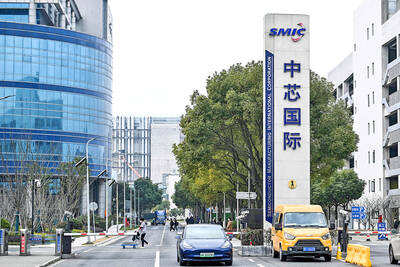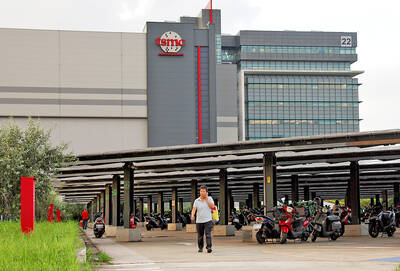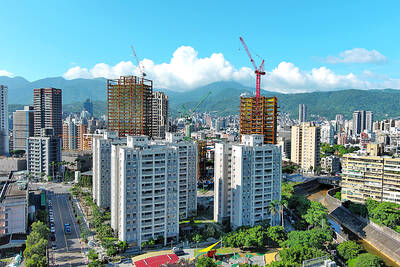The mood was gloomy when J.T. Wang (王振堂), chairman and chief executive of Acer Inc (宏碁), took to the stage at the investor conference in Taipei on Thursday.
“When our brain was diagnosed with a problem that had caused the whole body to malfunction, we had to be put on the operating table for a procedure,” he said.
Such were Wang’s opening remarks — and he once again impressed investors and the media with his straightforward attitude.
This time, he likened brain surgery to the Acer board’s dismissal of former chief executive and president Gianfranco Lanci in late March.
“It was a decision that caused jitters both inside and outside ... Everyone was wondering whether it was the end of the road for us,” Wang said.
He gave Lanci, a 14-year veteran at Acer, the credit for turning the Taiwanese firm into a worldwide PC name.
The Italian joined Acer after Texas Instrument’s PC division was bought by the Taiwanese company in 1997. His rapport with partners in Europe was partly the reason he was appointed, fueling Acer’s rise to become the world’s No. 2 PC brand.
Things started to turn sour when Lanci missed shipment and revenue targets two quarters in a row, prompting Acer to lose market share and miss out on new growth in the tablets and -smartphone markets.
“Lanci was unshakeable in his view that maximizing shipment volumes was the correct approach, but we found that direction to be a departure from the right track,” Wang said. “The board had to make a decision to change the chief executive and then seek to restructure the company.”
Both Wang and an internal source to which Taipei Times spoke to get an insight into Lanci’s so-called resignation on March 31, described the former chief executive in the same terms: goal-oriented, aggressive and unshakeable on his own decisions.
He was given so much power by Acer that he had a say on everything from sales to shipments and Wang didn’t interfere.
Under the old management, every division competed with others, creating problems and undermining competitiveness, Wang said.
“A consulting firm told us that when an executive has a say in almost everything, the company is likely to be slow in formulating strategies to cope with sudden changes in the industry,” Wang said.
The changes he referred to were the rise of tablet PCs and smartphones, which Acer believes are opening up a new host of opportunities, two fields in which the company is determined not to miss out.
In contrast to notebook PCs that create data, tablets and smartphones are more focused on -“consuming data,” meaning users spend more time using applications such as games on these devices, the chairman said.
At a time when the dominance of the Wintel (Windows and Intel) camp is being chipped away at by the rising strength of the Android and ARM-based system on a chip, Acer sees new chances aplenty.
Lanci’s successor, Jim Wong (翁建仁), 53, agreed to lead the Taiwanese maker through the new round of challenges as he saw “new opportunities” arising from this shift in the technology paradigm, Wang said.
The soft-spoken Wong marked his first public appearance at the investor conference since his promotion, making an immediate impression with his command of English during the presentation.
He joined the Latin American regional sales division of Acer in 1986.
In the following decade, Wong held various managerial positions overseeing product management and marketing, gaining extensive experience in original design manufacturer relations and brand management, according to Acer’s corporate profile.
Wong is noted for his role in launching Acer’s first portable PC in the early 1990s. In 1999, he received the 17th Annual Management of Excellency Award in Taiwan; in 2000, he became vice president of Acer’s brand business unit; and in 2001 he was named president of IT Products Global Operations.
“We apologize for any inconvenience caused by the change in chief executive and the repeated failures to meet quarterly targets,” Wang said. “We hope everyone will give the new management team and Acer a second chance.”

NO BREAKTHROUGH? More substantial ‘deliverables,’ such as tariff reductions, would likely be saved for a meeting between Trump and Xi later this year, a trade expert said China launched two probes targeting the US semiconductor sector on Saturday ahead of talks between the two nations in Spain this week on trade, national security and the ownership of social media platform TikTok. China’s Ministry of Commerce announced an anti-dumping investigation into certain analog integrated circuits (ICs) imported from the US. The investigation is to target some commodity interface ICs and gate driver ICs, which are commonly made by US companies such as Texas Instruments Inc and ON Semiconductor Corp. The ministry also announced an anti-discrimination probe into US measures against China’s chip sector. US measures such as export curbs and tariffs

The US on Friday penalized two Chinese firms that acquired US chipmaking equipment for China’s top chipmaker, Semiconductor Manufacturing International Corp (SMIC, 中芯國際), including them among 32 entities that were added to the US Department of Commerce’s restricted trade list, a US government posting showed. Twenty-three of the 32 are in China. GMC Semiconductor Technology (Wuxi) Co (吉姆西半導體科技) and Jicun Semiconductor Technology (Shanghai) Co (吉存半導體科技) were placed on the list, formally known as the Entity List, for acquiring equipment for SMIC Northern Integrated Circuit Manufacturing (Beijing) Corp (中芯北方積體電路) and Semiconductor Manufacturing International (Beijing) Corp (中芯北京), the US Federal Register posting said. The

READY TO HELP: Should TSMC require assistance, the government would fully cooperate in helping to speed up the establishment of the Chiayi plant, an official said Taiwan Semiconductor Manufacturing Co (TSMC, 台積電) yesterday said its investment plans in Taiwan are “unchanged” amid speculation that the chipmaker might have suspended construction work on its second chip packaging plant in Chiayi County and plans to move equipment arranged for the plant to the US. The Chinese-language Economic Daily News reported earlier yesterday that TSMC had halted the construction of the chip packaging plant, which was scheduled to be completed next year and begin mass production in 2028. TSMC did not directly address whether construction of the plant had halted, but said its investment plans in Taiwan remain “unchanged.” The chipmaker started

MORTGAGE WORRIES: About 34% of respondents to a survey said they would approach multiple lenders to pay for a home, while 29.2% said they would ask family for help New housing projects in Taiwan’s six special municipalities, as well as Hsinchu city and county, are projected to total NT$710.65 billion (US$23.61 billion) in the upcoming fall sales season, a record 30 percent decrease from a year earlier, as tighter mortgage rules prompt developers to pull back, property listing platform 591.com (591新建案) said yesterday. The number of projects has also fallen to 312, a more than 20 percent decrease year-on-year, underscoring weakening sentiment and momentum amid lingering policy and financing headwinds. New Taipei City and Taoyuan bucked the downturn in project value, while Taipei, Hsinchu city and county, Taichung, Tainan and Kaohsiung